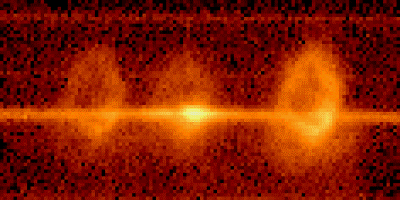An astronomy team at the National Optical Astronomy Observatory has detected the presence of the C60 and C70 fullerene molecules in space utilizing the Spitzer Space Telescope. The team is also working on the first extragalactic detection of graphene or planar C24.
 Magellanic Cloud Planetary Nebulae
Magellanic Cloud Planetary Nebulae
Domingo Anibal Garcia-Hernandez is the leader of the research team and Richard Shaw and Letizia Stanghellini are its members. According to the research team, shocks due to collisions due to the winds from aged stars in planetary nebulae are responsible for the creation of graphene and fullerenes.
The astronomers have proposed that the shock-stimulated destruction due to the collisions between hydrogenated amorphous carbon grains is responsible for the creation of graphene and fullerenes. Such collisions are anticipated in the stellar winds from planetary nebulae and the astronomers have observed intensified stellar winds emanated in the ultraviolet spectrum of the old stars.
The presence of Small Magellanic Cloud makes the carbon-rich planetary nebulae a favorable spot for complex carbon molecules. Stanghellini stated that the Spitzer Space Telescope is vital in investigating complex carbon molecules in stellar conditions. The team is not only investigating the presence of fullerenes and other carbon molecules but also studying the formation and evolution of these molecules in stars, he said. The astronomers anticipate detecting other molecules in planetary nebulae to investigate certain physical processes that would assist them to know the biochemistry of life, he added.